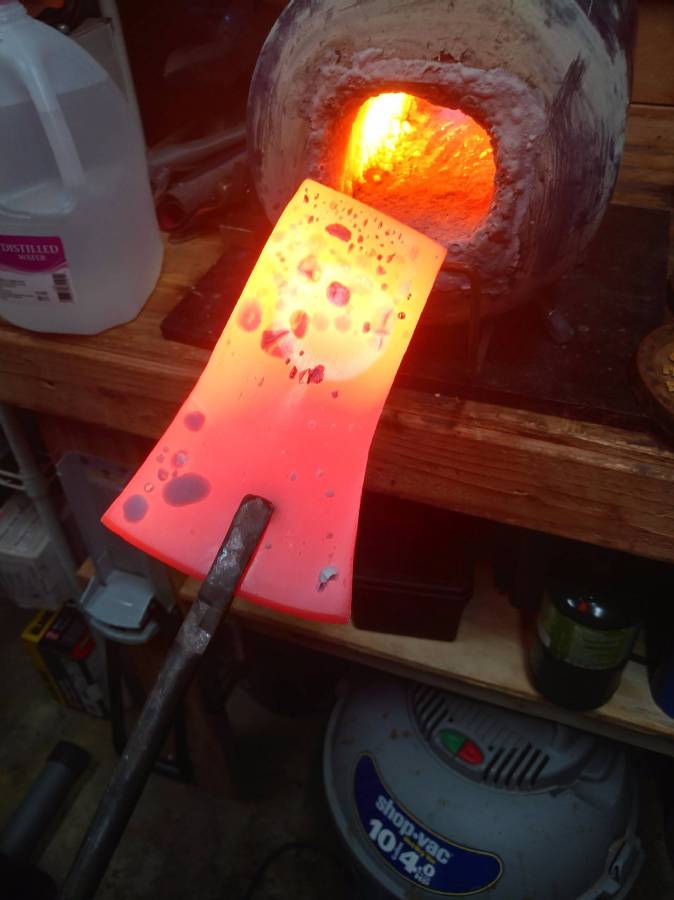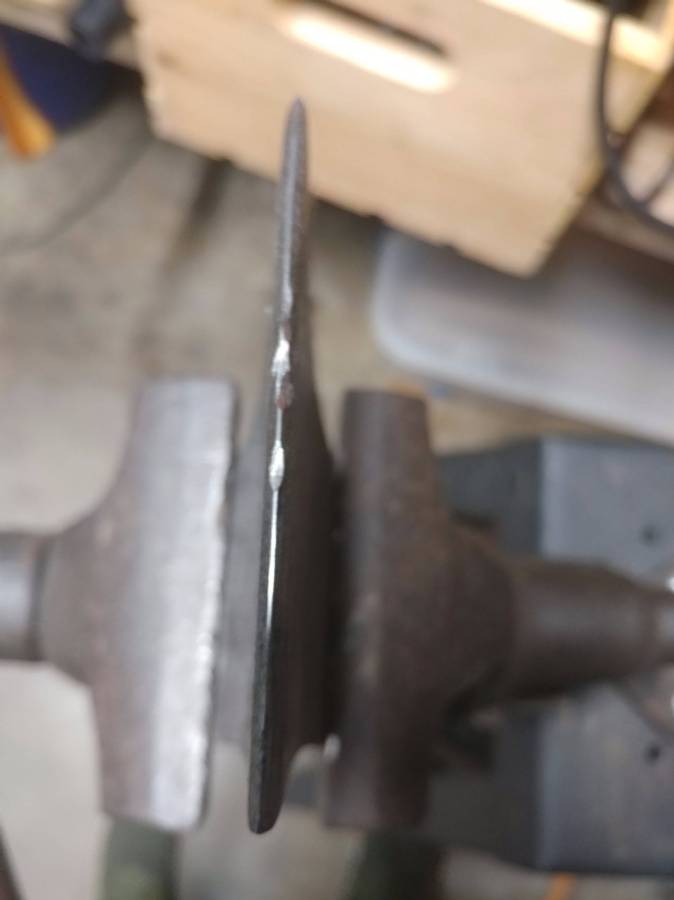Throws good sparks on the grinder but it still ate the metal fast. Way more than mild steel but rebar threw sparks out of the top of the grinder which the head didn't at all.
I've had ok luck chopping up chineseum axes and using them for parts(to blade things).
I've not run into a problem in a few years.Jokes aside,i don't think they'd economise on steel composition.Steel's cheap,they've other means to cut costs.
Spark-testing using rebar as analog is weird,as US rebar is not a simple,straightforward issue,and may contain carbides of assorted elements that in contact with your specific abrasive create funkier-than-usual spark....(at least look up the number and see what exactly rebar you have,it's not all created equal;but in any case,strange choice of analog).
Working with junk is always just that,what's there to say.Guessing game at best,not worth the fuel.
IF you're still willing to experiment,yes,up the heat,soak it at crit for a minute/minute and a half,and quench Immediately,as in have the quench tank within couple feet to forge.
IF you're looking to actually get a tool out of the deal,you'll have to Normalise now,after all these trials,too.(no big deal,just more fuel).
I doubt that it actually lacks C,it'd be likelier that the composition is more complex,that it uses Cr or Moly or something else to cause it to be deep-hardening,that'll take your soaking time Way up(it's 30 minutes for O1,for example...).
But the guessing-game can go on forever,with junk...

Good luck anyway,you've a decent heat-source there,lots Can be done!



